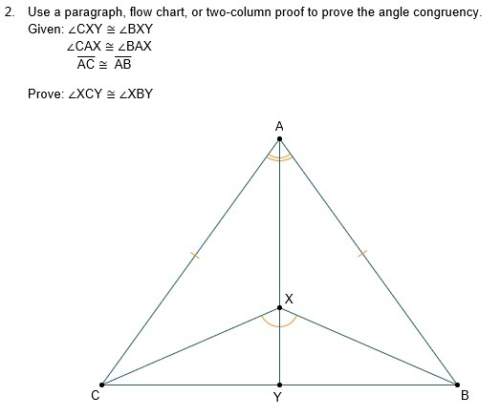
Mathematics, 16.06.2021 23:20 avablender
You are the Captain of MS Hipparchus, a Suezmax container ship that carries up to 10,000
containers. The MS Hipparchus has an air draft of 67m. The air draft means that the height
from the water line to the highest point on the ship.
Container ships docking at the Port of New York and New Jersey traverse the Kill van Kull,
passing under the Bayonne Bridge between Staten Island and Bayonne before they dock at the
container ports in Newark Bay. The deck of the bridge is 66m above Sea Level, but because of
the tides, the surface of the water can be above or below Sea Level. You have information on
the tides in the Kill van Kull that shows that on May 3, 2021, there is a high tide of 2.9m
(relative to sea level) at 5:00 AM and a low tide of -2.1m (relative to sea level) at 11:00 AM.
Based on your knowledge of tides from Earth Science, there are roughly two high tides per day,
twelve hours apart. (I recommend using Desmos to create a sinusoidal function which you can
use to answer the problems below. If you do use Desmos include a screenshot of your Desmos
screen.)
(A) What is the average height of the water over the course of a day? How much higher and
lower than the average water level is the high tide and low tide?
(B) You are expected to arrive at the Bayonne Bridge at 7:00 PM on May 3rd. Will you be able to
clear the Bayonne Bridge at that time or not? Explain why or why not.
(C) In order to plan for when you would be able to clear the Bridge, you want to find all of the
times on May 3rd, when you will be able to clear the Bridge. (You can express this in decimal
parts of the hour instead of having to convert to hours and minutes.)

Answers: 2
Another question on Mathematics

Mathematics, 20.06.2019 18:04
The isosceles triangle has two sides of equal length, a, that sre longer than the length of the base ,b. the equation 2a+b=15.7 can be used to find the sides length. if one of the longer sides is 6.3 centimeters what is the length of the base
Answers: 2

Mathematics, 21.06.2019 17:00
The magnitude, m, of an earthquake is defined to be m=log l/s, where i is the intensity of the earthquake (measured by the amplitude of the seismograph wave) and s is the intensity of a “standard” earthquake, which is barely detectable. what is the magnitude of an earthquake that is 1,000 times more intense than a standard earthquake? use a calculator. round your answer to the nearest tenth.
Answers: 1

Mathematics, 21.06.2019 17:30
Suppose that an airline uses a seat width of 16.516.5 in. assume men have hip breadths that are normally distributed with a mean of 14.414.4 in. and a standard deviation of 0.90.9 in. complete parts (a) through (c) below. (a) find the probability that if an individual man is randomly selected, his hip breadth will be greater than 16.516.5 in. the probability is nothing. (round to four decimal places as needed.)
Answers: 3

Mathematics, 21.06.2019 18:40
Airplane speeds are measured in three different ways: (1) indicated speed, (2) true speed, and (3) ground speed. the indicated airspeed is the airspeed given by an instrument called an airspeed indicator. a plane’s indicated airspeed is different from its true airspeed because the indicator is affected by temperature changes and different altitudes of air pressure. the true airspeed is the speed of the airplane relative to the wind. ground speed is the speed of the airplane relative to the ground. for example, a plane flying at a true airspeed of 150 knots into a headwind of 25 knots will have a ground speed of 125 knots. the problems below refer to static and dynamic pressure. static pressure is used when a body is in motion or at rest at a constant speed and direction. dynamic pressure is used when a body in motion changes speed or direction or both. a gauge compares these pressures, giving pilots an indicated airspeed. in problem #s 1 and 2, use the following information. the indicated airspeed s (in knots) of an airplane is given by an airspeed indicator that measures the difference p (in inches of mercury) between the static and dynamic pressures. the relationship between s and p can be modeled by s=136.4p√+4.5. 1. find the differential pressure when the indicated airspeed is 157 knots. 2. find the change in the differential pressure of an airplane that was traveling at 218 knots and slowed down to195 knots. in problem #s 3 and 4, use the following information. the true airspeed t (in knots) of an airplane can be modeled by t=(1+a50,000) ⋅ s, where a is the altitude (in feet) and s is the indicated airspeed (in knots). 3. write the equation for true airspeed t in terms of altitude and differential pressure p. 4. a plane is flying with a true airspeed of 280 knots at an altitude of 20,000 feet. estimate the differential pressure. explain why you think your estimate is correct.
Answers: 2
You know the right answer?
You are the Captain of MS Hipparchus, a Suezmax container ship that carries up to 10,000
containers...
Questions

Mathematics, 09.03.2021 01:00

History, 09.03.2021 01:00

Mathematics, 09.03.2021 01:00

Mathematics, 09.03.2021 01:00




Mathematics, 09.03.2021 01:00


Mathematics, 09.03.2021 01:00


Mathematics, 09.03.2021 01:00


Health, 09.03.2021 01:00

Mathematics, 09.03.2021 01:00

English, 09.03.2021 01:00

Computers and Technology, 09.03.2021 01:00

Mathematics, 09.03.2021 01:00

Computers and Technology, 09.03.2021 01:00




